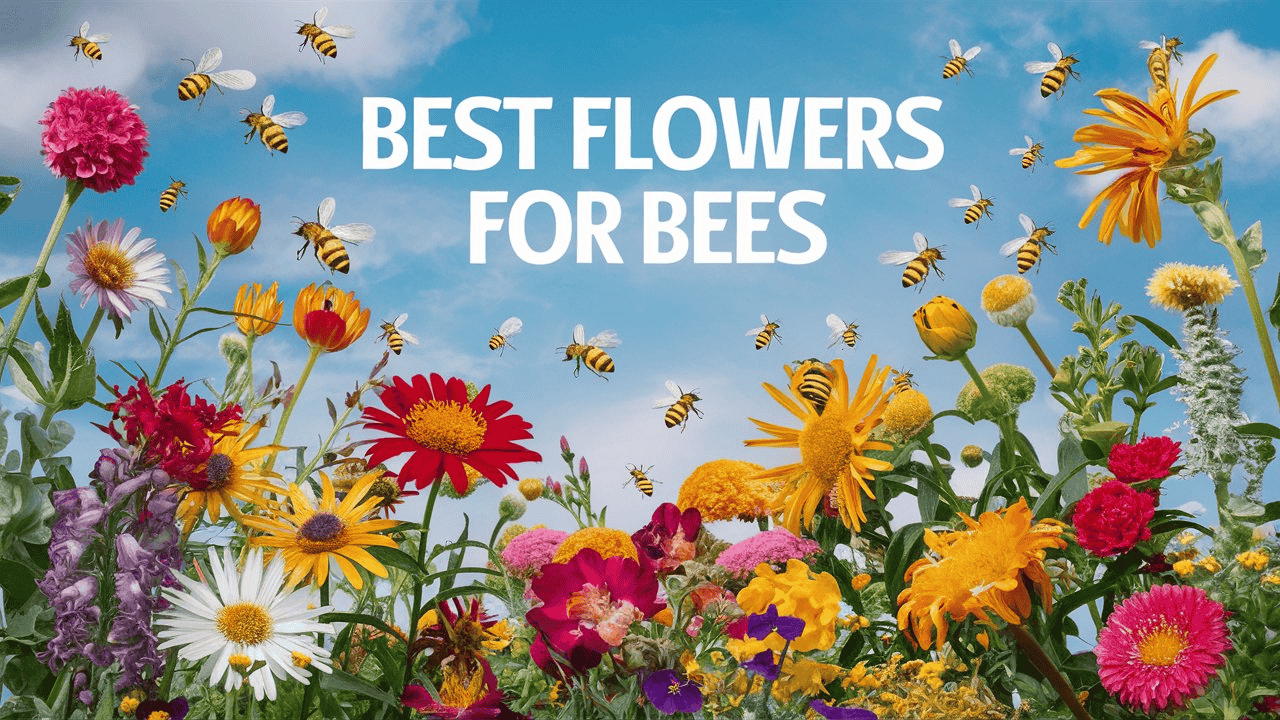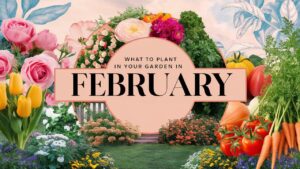As the vital dance between bees and blossoms unfolds, our gardens become vibrant havens for these essential pollinators. Choosing the right flowers becomes an act of love, nurturing both the bees and the flourishing tapestry of life they sustain. Let’s delve into the captivating world of bee-friendly blooms, exploring five exceptional options that will transform your garden into a buzzing paradise.
Best Flowers for Bees: A Buzzing Guide to Pollinator-Friendly Gardens
Goldenrod: A Beacon of Late Summer Abundance
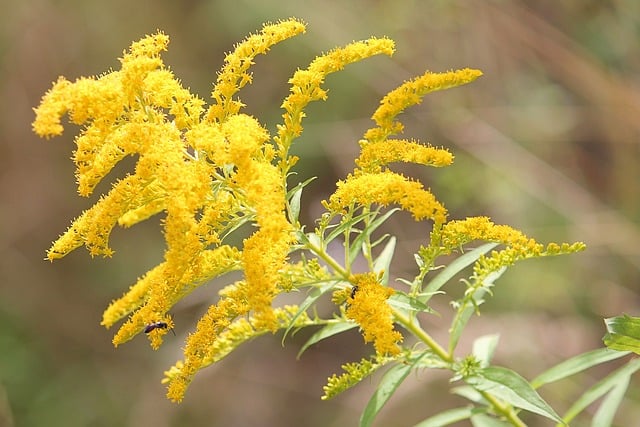
Goldenrod’s towering spires, erupting in a radiant cascade of golden yellow, are a beacon of late summer abundance. This North American native is a magnet for bees, offering a rich source of pollen and nectar when other blooms begin to dwindle. Its sturdy stems and long-lasting blooms make it an excellent choice for attracting a diverse range of bee species, including bumblebees, honeybees, and mason bees.
Bee Balm: Aromatic Allure and Unwavering Devotion
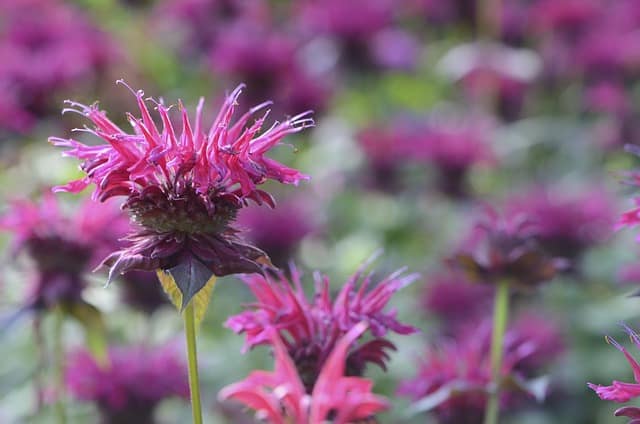
Bee balm, aptly named for its irresistible allure to bees, is a member of the mint family that fills the air with a captivating minty fragrance. Its vibrant blooms, ranging from crimson to purple to pink, erupt in whorls around the stem, creating a visual feast for both bees and human admirers. Bee balm’s unwavering devotion to pollinators extends throughout the summer, providing a continuous source of sustenance.
Black-Eyed Susan: A Cheerful Abundance for All
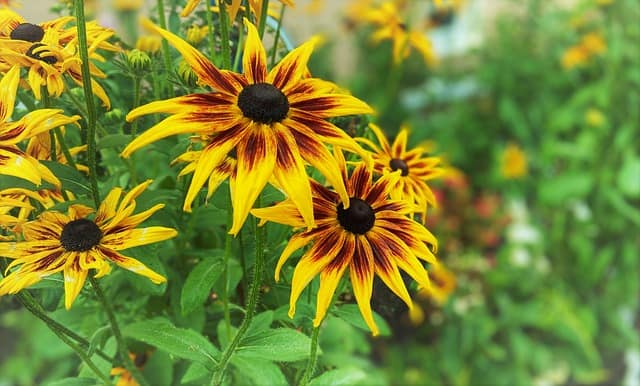
Black-Eyed Susan, a cheerful daisy-like flower with a bold brown center, is a beloved staple in many gardens. Its bright yellow petals, radiating outwards like sunshine, offer a generous landing pad for bees of all sizes. Black-Eyed Susan blooms prolifically throughout the summer, ensuring a steady supply of pollen and nectar for tireless pollinators. Its adaptability to various soil conditions and its resistance to pests make it an easy and rewarding choice for any garden.
Lupine: A Towering Treat for Bumblebees
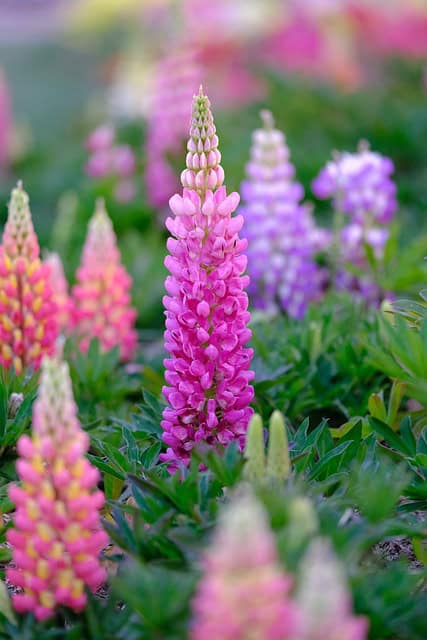
Lupine, with its majestic spires of colorful flowers, is a feast for the eyes and a haven for bumblebees. These robust plants, reaching heights of up to five feet, produce dense clusters of pea-like blossoms that offer an abundance of pollen and nectar. Bumblebees, with their hefty bodies and powerful wings, are particularly adept at accessing the nectar hidden within lupine’s flowers, making them ideal partners in this pollinator-plant dance.
Liatris: A Feathery Feast for Long-Tongued Bees
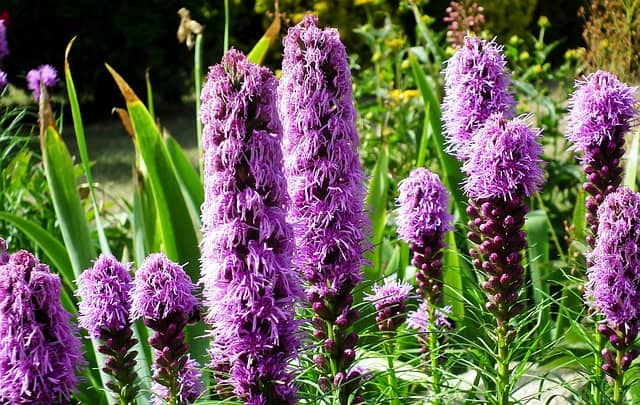
Liatris, also known as blazing star or gayfeather, is a prairie native that adds vertical interest and a touch of whimsy to the garden. Its tall, slender stems are adorned with feathery plumes of purple flowers that resemble bottle brushes. Liatris is a favorite of long-tongued bees, such as carpenter bees and leafcutter bees, who can reach deep into the tubular flowers to access the nectar. Its late summer bloom also provides a vital food source for bees when other flowers are fading.
Marigold: A Fiesta of Color and a Repellent Power
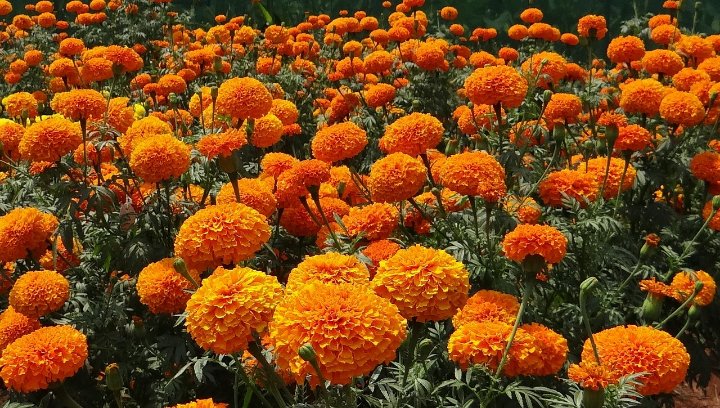
Marigolds, with their vibrant orange, yellow, and red blooms, add a festive touch to any garden while also acting as a natural pest repellent. Their strong scent and insecticidal properties deter unwanted insects, protecting other plants in the garden. Marigolds are also a valuable source of pollen and nectar for bees, particularly smaller species like sweat bees and mining bees. Their long blooming period, from early summer to fall, ensures a continuous supply of nourishment for these tireless pollinators.
Mint: Aromatic Delight and a Buzzing Haven
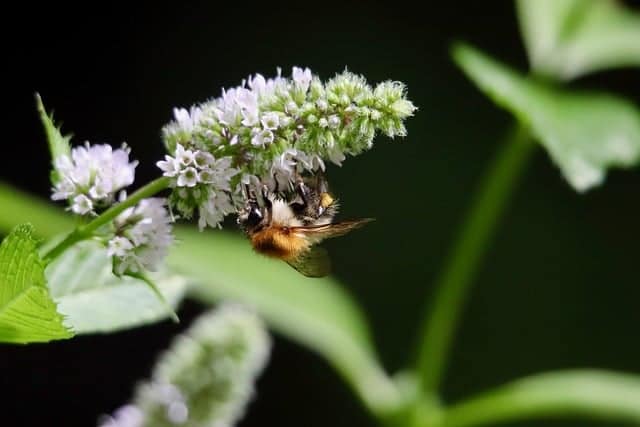
Mint, with its aromatic leaves and refreshing flavor, is not just a culinary delight but also a bee magnet. Its small, tubular flowers, clustered in whorls around the stems, offer a rich source of nectar that attracts a variety of bee species. Mint is particularly beneficial for bees in urban environments, where floral resources can be scarce. Its ability to thrive in partial shade also makes it a valuable addition to gardens with limited sun exposure.
Nasturtium: Edible Delight and a Nectar-Rich Feast
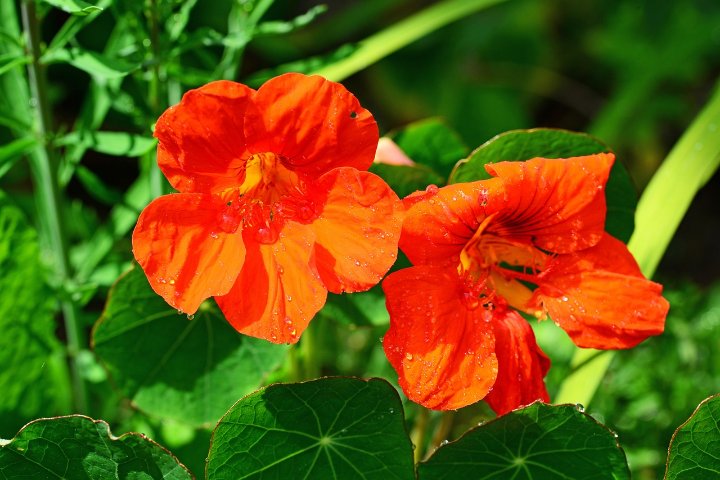
Nasturtium, with its vibrant, funnel-shaped flowers and round, shield-like leaves, is a delightful addition to any garden. Its edible flowers and leaves add a peppery kick to salads and sandwiches, while its nectar-rich blooms provide a feast for bees. Nasturtiums are particularly attractive to bumblebees, who appreciate their open flowers and abundant pollen. Their long blooming period, from early summer to fall, ensures a steady source of nourishment for these hardworking pollinators.
Pansy: A Cheerful Face and a Sweet Reward
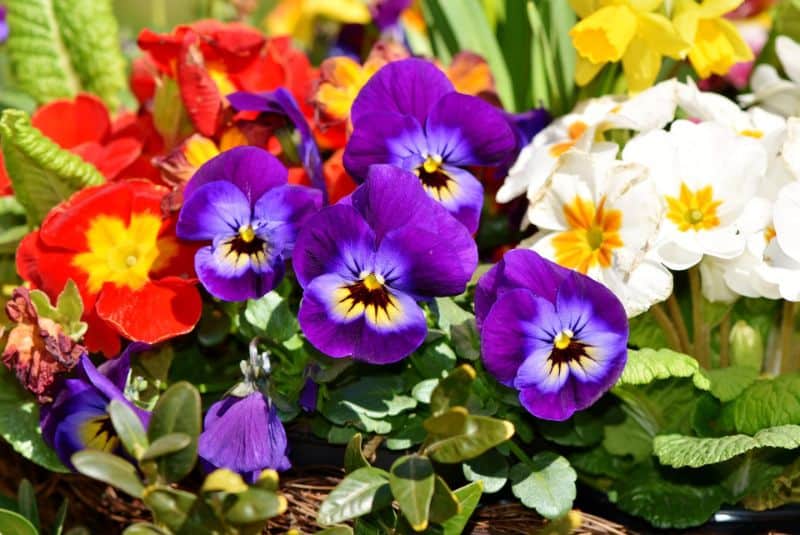
Pansies, with their cheerful faces and velvety petals, add a touch of whimsy and charm to any garden. These cold-hardy annuals bloom prolifically throughout the spring and fall, offering a continuous supply of pollen and nectar for bees. Pansies are particularly attractive to smaller bee species, such as mason bees and leafcutter bees, who can easily access their shallow, open flowers. Their wide range of colors, from vibrant yellows and oranges to deep purples and blues, adds a splash of color to your garden while providing a vital food source for bees.
Peony: A Regal Bloom and a Buzzing Bounty
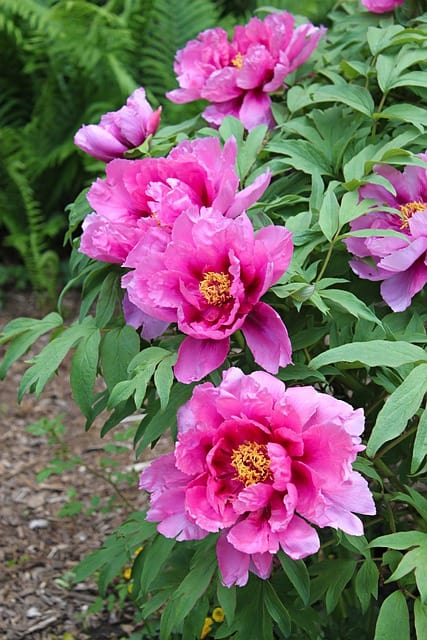
Peonies, with their opulent, ruffled blooms and intoxicating fragrance, are the epitome of elegance in the garden. These long-lived perennials, reaching heights of up to three feet, produce massive flowers in a variety of colors, from soft pinks to deep reds. Peonies are a favorite of many bee species, including bumblebees, honeybees, and solitary bees. Their large, open flowers provide an abundance of pollen and nectar, making them a valuable food source for these tireless pollinators.
Lantana: A Vibrant Tapestry and a Nectar Buffet
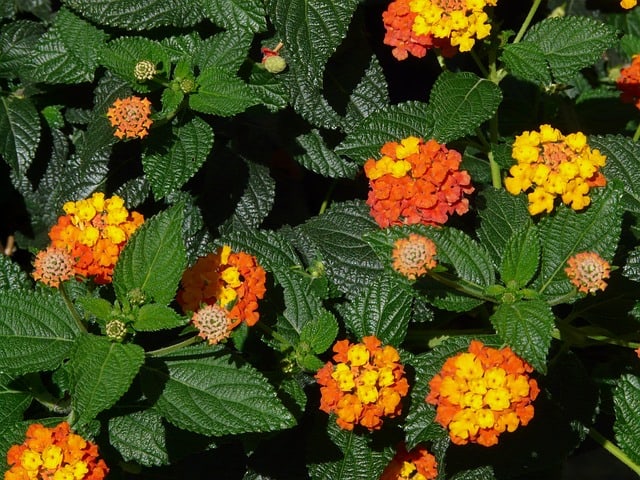
Lantana, with its vibrant clusters of small, tubular flowers, creates a dazzling tapestry of color in the garden. These heat-tolerant perennials bloom prolifically from spring to fall, attracting a wide variety of bee species with their rich nectar. Lantana’s flowers change color as they age, creating a mesmerizing kaleidoscope of oranges, yellows, pinks, and reds. This constant change ensures a continuous supply of nectar, making lantana a valuable resource for bees throughout the blooming season.
Snowdrops: Early Jewels and a Vital Awakening Call
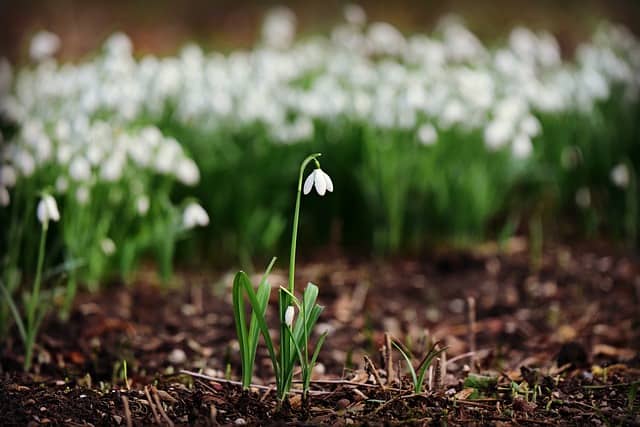
Snowdrops, with their delicate white flowers and drooping bell-shaped heads, are the first sign of spring’s arrival. These hardy bulbs emerge through the thawing snow, providing an early source of pollen and nectar for bees awakening from their winter slumber. Snowdrops are particularly important for queen bees, who need to build up their energy reserves to start new colonies. Their early bloom ensures a vital food source at a time when other flowers are scarce.
Phlox: A Fragrant Feast for Butterflies and Bees
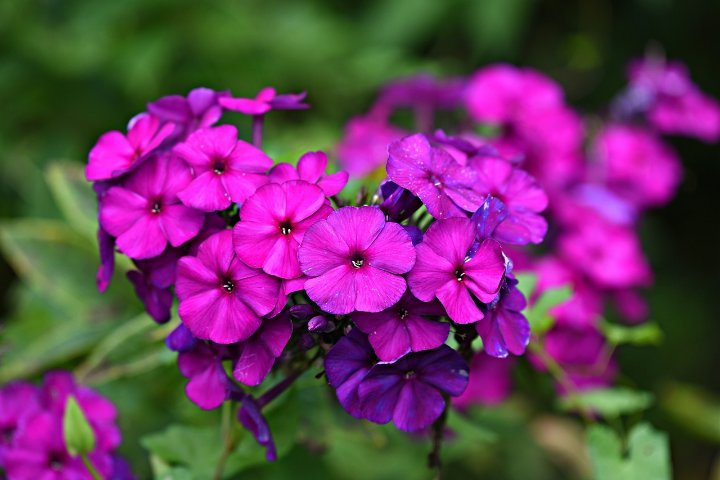
Phlox, with its clusters of fragrant, star-shaped flowers, adds a touch of elegance and charm to any garden. These hardy perennials bloom profusely throughout the summer, providing a continuous supply of pollen and nectar for bees and butterflies. Phlox is particularly attractive to butterflies, who are drawn to their vibrant colors and sweet fragrance. Their long, slender flower tubes also make them accessible to long-tongued bees, such as carpenter bees and bumblebees.
Sunflower: A Towering Beacon and a Nectar-Rich Bounty

Sunflowers, with their towering heights and radiant yellow faces, are a symbol of summer and a magnet for bees. These annuals produce massive flower heads that can reach up to 12 inches in diameter, offering a rich bounty of pollen and nectar. Sunflowers are particularly attractive to honeybees, who appreciate their abundant resources and ease of access. Their long blooming period, from mid-summer to fall, ensures a steady supply of nourishment for these hardworking pollinators.
Flowering Thyme: A Culinary Delight and a Buzzing Oasis
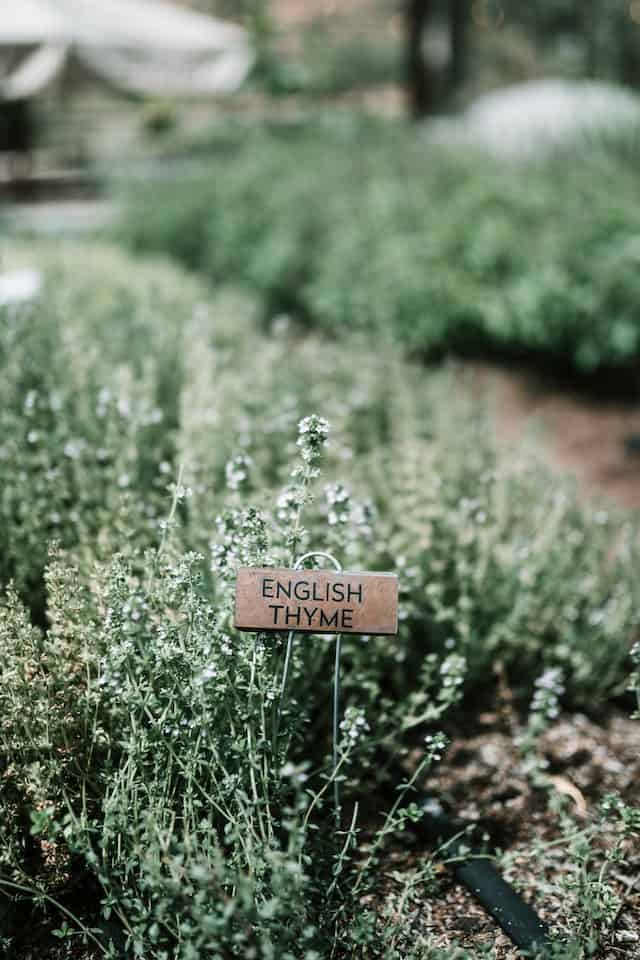
Flowering thyme, with its delicate pink or white flowers and aromatic leaves, adds a touch of culinary delight and a buzzing oasis to any garden. These low-growing perennials are a favorite of bees, who are attracted to their sweet nectar and abundance of pollen. Thyme’s flowers bloom throughout the summer, providing a continuous source of nourishment for bees and other pollinators. Its fragrant leaves also add a delightful flavor to savory dishes and herbal teas.
Zinnia: A Kaleidoscope of Color and a Nectar Buffet
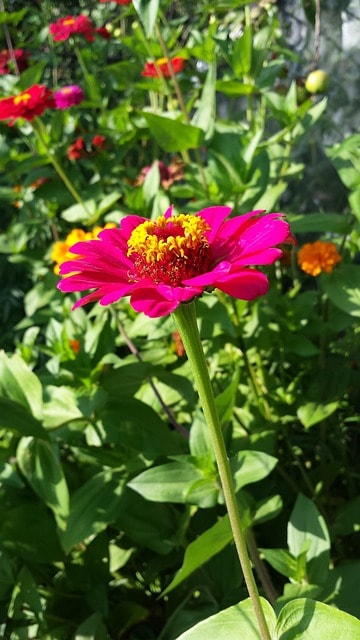
Zinnias, with their vibrant, daisy-like flowers in a wide array of colors, add a touch of whimsy and cheer to any garden. These easy-to-grow annuals bloom prolifically from early summer to fall, providing a continuous supply of pollen and nectar for bees. Zinnias are particularly attractive to smaller bee species, such as mason bees and leafcutter bees, who can easily access their open flowers. Their long blooming period and wide range of colors make them a valuable resource for bees throughout the season.
Lavender: A Fragrant Haven and a Calming Influence
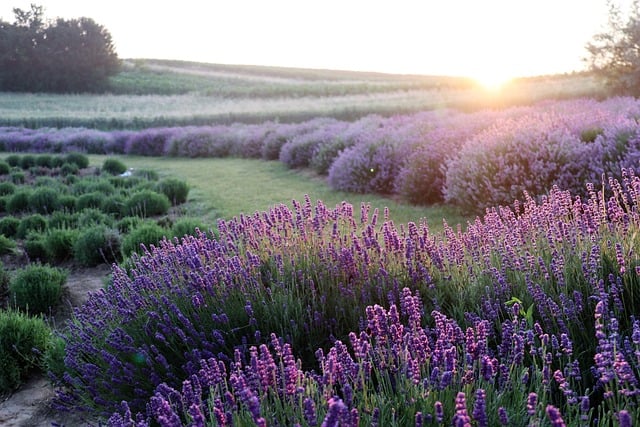
Lavender, with its fragrant purple flowers and silvery-green foliage, adds a touch of tranquility and a buzzing haven to any garden. These hardy perennials bloom throughout the summer, producing aromatic flowers that attract a variety of bee species. Lavender is particularly attractive to bumblebees, who appreciate its abundance of pollen and nectar. Its calming fragrance also has a soothing effect on humans, making it a welcome addition to any garden or home.
Allium: Ornamental Onions with a Nectar Surprise
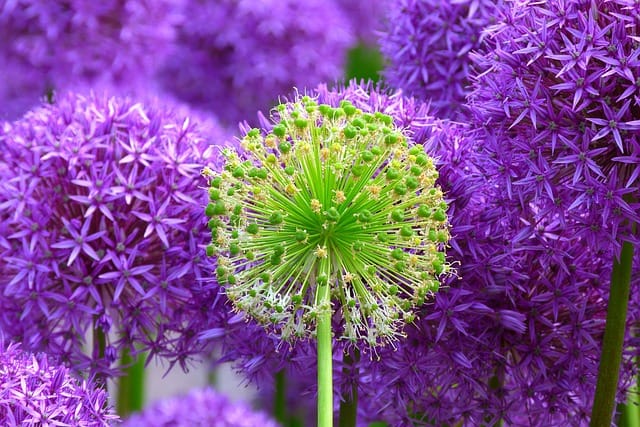
Alliums, with their globe-shaped flower heads and tall, slender stems, add a touch of architectural interest and a surprising nectar treat to any garden. These ornamental onions, despite their pungent foliage, produce clusters of small, star-shaped flowers that are a magnet for bees. Alliums bloom in late spring and early summer, providing a valuable food source for bees when other flowers are scarce. Their tall stems also make them easily accessible to a variety of bee species.
Aster: A Late-Season Feast for Bees
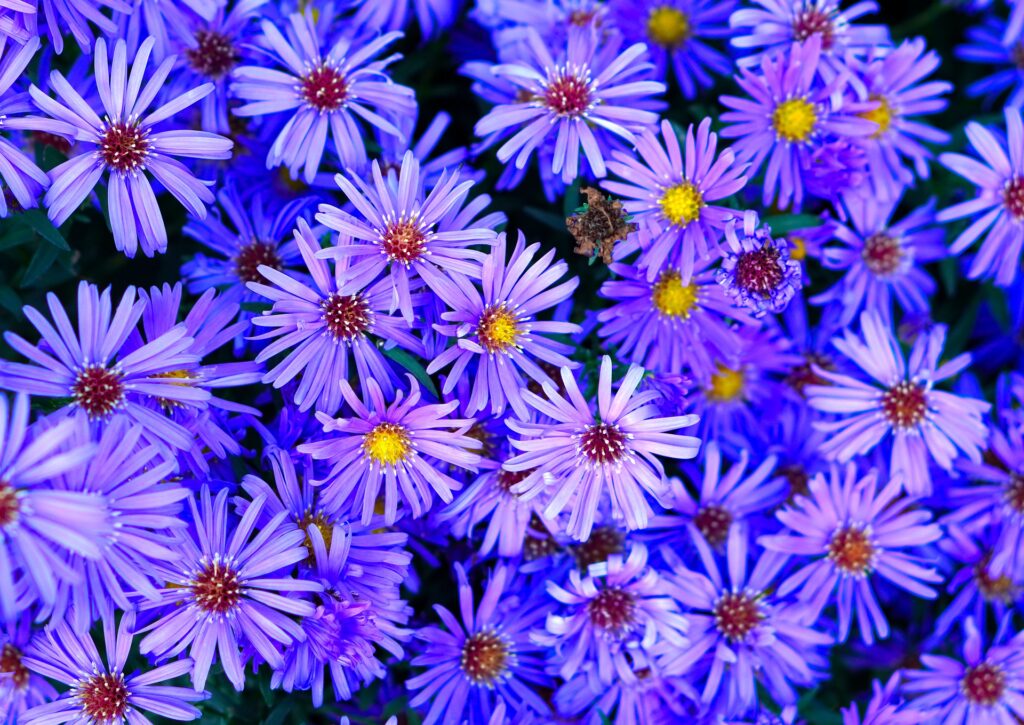
Asters, with their daisy-like flowers in a wide range of colors, add a touch of late-season cheer to the garden. These hardy perennials bloom from late summer to fall, providing a vital food source for bees when other flowers are fading. Asters are particularly attractive to butterflies and long-tongued bees, who appreciate their abundant pollen and nectar. Their long blooming period ensures a steady supply of nourishment for these hardworking pollinators as they prepare for winter.
Blue Salvia / Sage: A Fragrant Oasis and a Nectar-Rich Bounty
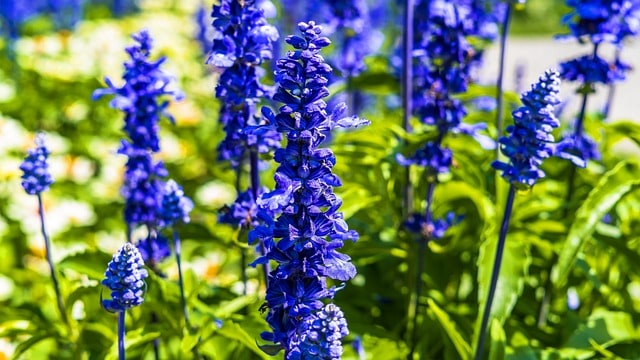
Blue salvia, also known as sage, with its vibrant blue flowers and aromatic leaves, adds a touch of elegance and a buzzing oasis to any garden. These hardy perennials bloom throughout the summer, producing spikes of tubular flowers that are rich in nectar. Blue salvia is particularly attractive to bumblebees and carpenter bees, who appreciate its abundance of pollen and nectar. Its fragrant leaves also add a delightful flavor to culinary dishes and herbal teas.
Chives: A Culinary Delight and a Bee-Friendly Treat
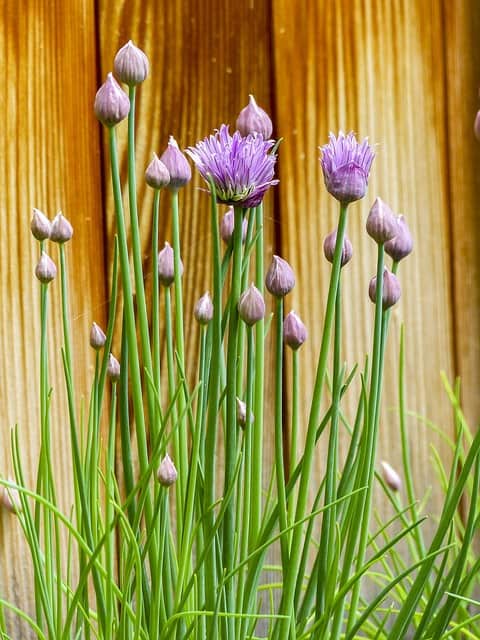
Chives, with their delicate purple flowers and slender, chive-like leaves, add a touch of culinary delight and a bee-friendly treat to any garden. These hardy perennials bloom in early summer, producing clusters of small, star-shaped flowers that are a magnet for bees. Chives are particularly attractive to smaller bee species, such as mason bees and leafcutter bees, who can easily access their shallow, open flowers. Their edible leaves also add a mild onion flavor to salads and dips.
Cleome: A Spider-Like Allure and a Nectar-Rich Feast
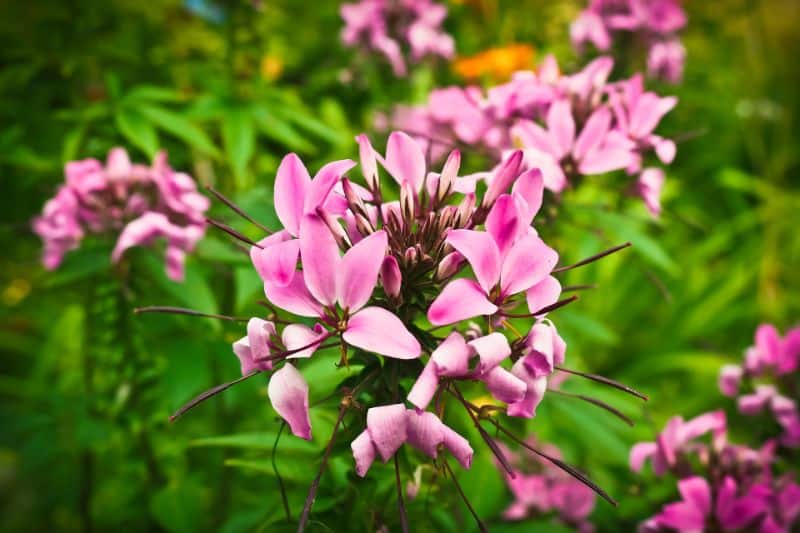
Cleome, with its spider-like flowers and tall, slender stems, adds a touch of exotic charm and a nectar-rich feast to any garden. These heat-tolerant annuals bloom prolifically from summer to fall, producing clusters of small, fragrant flowers that are a magnet for bees. Cleome is particularly attractive to butterflies and long-tongued bees, who appreciate their abundant pollen and nectar. Their tall stems also make them easily accessible to a variety of bee species.
Joe-Pye Weed: A Towering Beacon and a Nectar Buffet
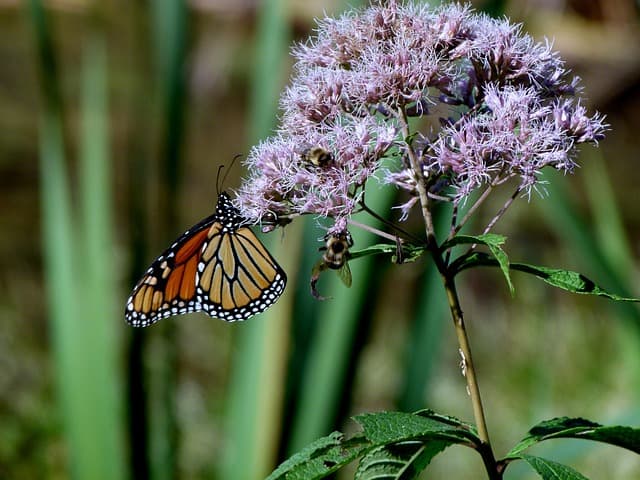
Joe-Pye weed, with its towering heights and clusters of fluffy, pink or purple flowers, adds a touch of wild beauty and a nectar buffet to any garden. These hardy perennials bloom in late summer and early fall, providing a vital food source for bees when other flowers are fading. Joe-Pye weed is particularly attractive to butterflies and long-tongued bees, who appreciate their abundant pollen and nectar. Their tall stems also make them easily accessible to a variety of bee species.
Lilac: A Fragrant Delight and a Buzzing Oasis
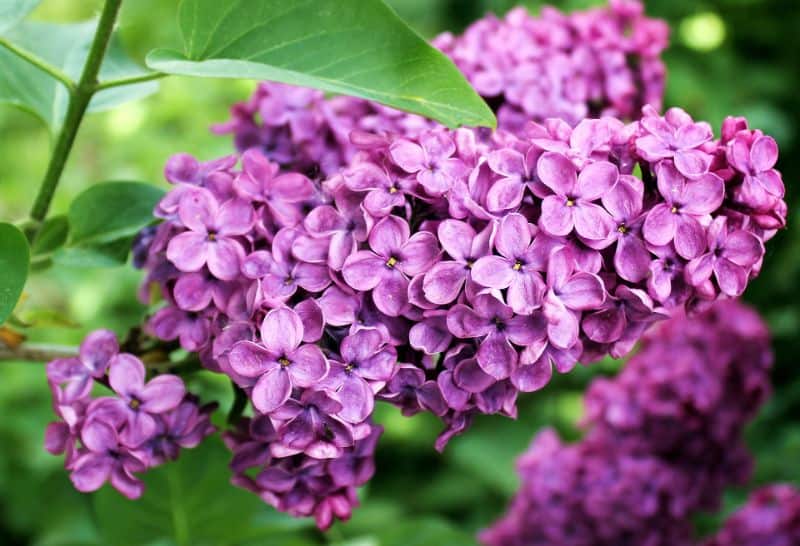
Lilac, with its fragrant purple flowers and heart-shaped leaves, adds a touch of romance and a buzzing oasis to any garden. These hardy shrubs bloom in the spring, filling the air with their intoxicating fragrance and attracting a variety of bee species. Lilacs are particularly attractive to bumblebees and carpenter bees, who appreciate their abundant pollen and nectar. Their long blooming period and ease of care make them a valuable addition to any bee-friendly garden.
Pentas: A Star-Shaped Delight and a Nectar-Rich Bounty
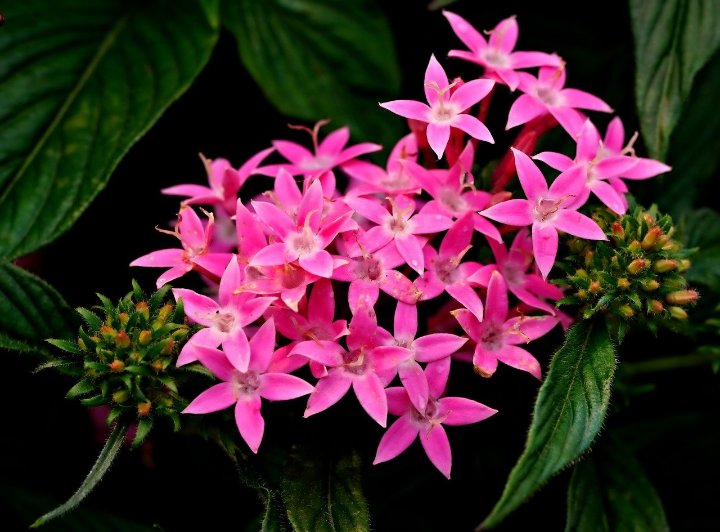
Pentas, with its star-shaped flowers in a variety of colors, adds a touch of tropical charm and a nectar-rich bounty to any garden. These heat-tolerant perennials bloom prolifically from spring to fall, providing a continuous supply of pollen and nectar for bees. Pentas are particularly attractive to butterflies and long-tongued bees, who appreciate their abundant pollen and nectar. Their long blooming period and ease of care make them a valuable addition to any bee-friendly garden.
Poppy: A Delicate Beauty and a Nectar Treat
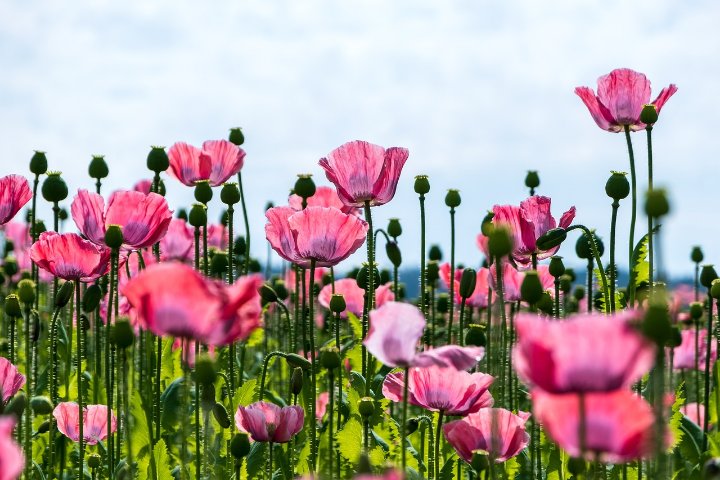
Poppy, with its delicate, crepe-paper flowers in a variety of vibrant colors, adds a touch of whimsy and a nectar treat to any garden. These hardy annuals bloom in the spring and summer, providing a valuable food source for bees when other flowers are scarce. Poppies are particularly attractive to smaller bee species, such as mason bees and leafcutter bees, who can easily access their shallow, open flowers. Their delicate petals and vibrant colors also add a touch of charm to any garden.
Purple Coneflower: A Native Beauty and a Nectar-Rich Bounty
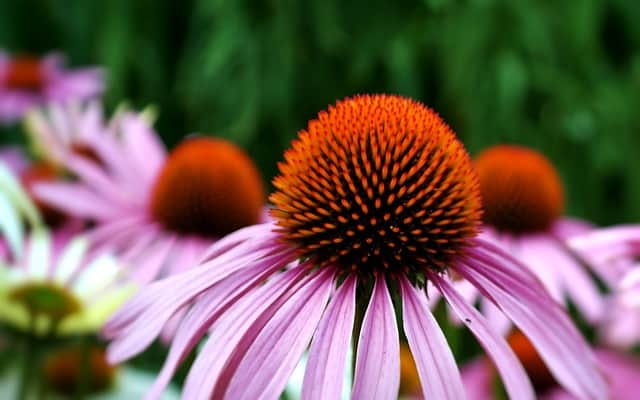
Purple coneflower, with its large, daisy-like flowers in shades of purple and pink, adds a touch of native beauty and a nectar-rich bounty to any garden. These hardy perennials bloom throughout the summer, providing a continuous supply of pollen and nectar for bees. Purple coneflower is particularly attractive to butterflies and long-tongued bees, who appreciate their abundant pollen and nectar. Their long blooming period and ease of care make them a valuable addition to any bee-friendly garden.
Snapdragon: A Whimsical Delight and a Nectar Buffet
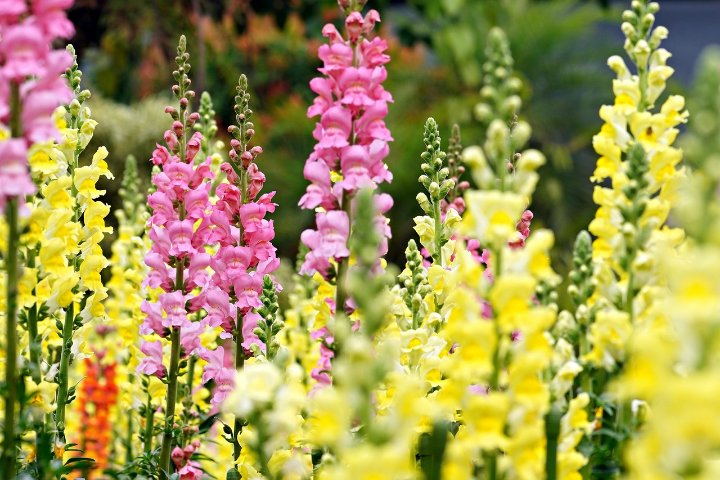
Snapdragon, with its whimsical, dragon-shaped flowers in a variety of colors, adds a touch of whimsy and a nectar buffet to any garden. These cool-season annuals bloom in the spring and fall, providing a valuable food source for bees when other flowers are scarce. Snapdragons are particularly attractive to bumblebees and long-tongued bees, who appreciate their abundant pollen and nectar. Their unique flower shape and vibrant colors also add a touch of charm to any garden.
Stonecrop: A Groundcover Haven and a Nectar-Rich Oasis
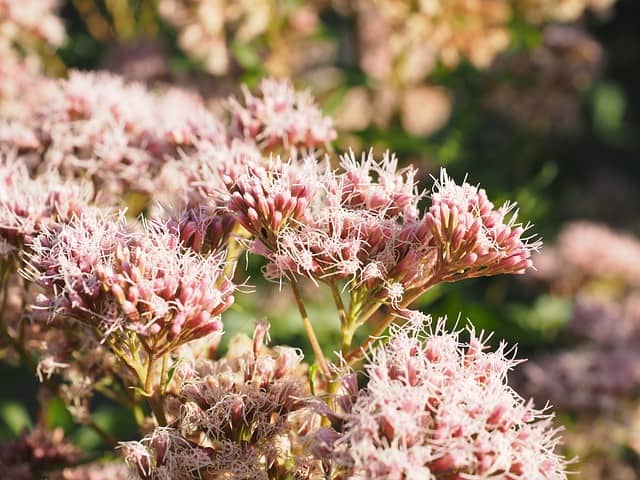
Stonecrop, with its low-growing, succulent leaves and clusters of star-shaped flowers, adds a touch of groundcover charm and a nectar-rich oasis to any garden. These hardy perennials bloom in the late summer and fall, providing a valuable food source for bees when other flowers are fading. Stonecrop is particularly attractive to smaller bee species, such as mason bees and leafcutter bees, who can easily access their shallow, open flowers. Their drought-tolerant nature and ease of care make them a valuable addition to any bee-friendly garden.
Wisteria: A Cascading Waterfall and a Nectar-Rich Feast
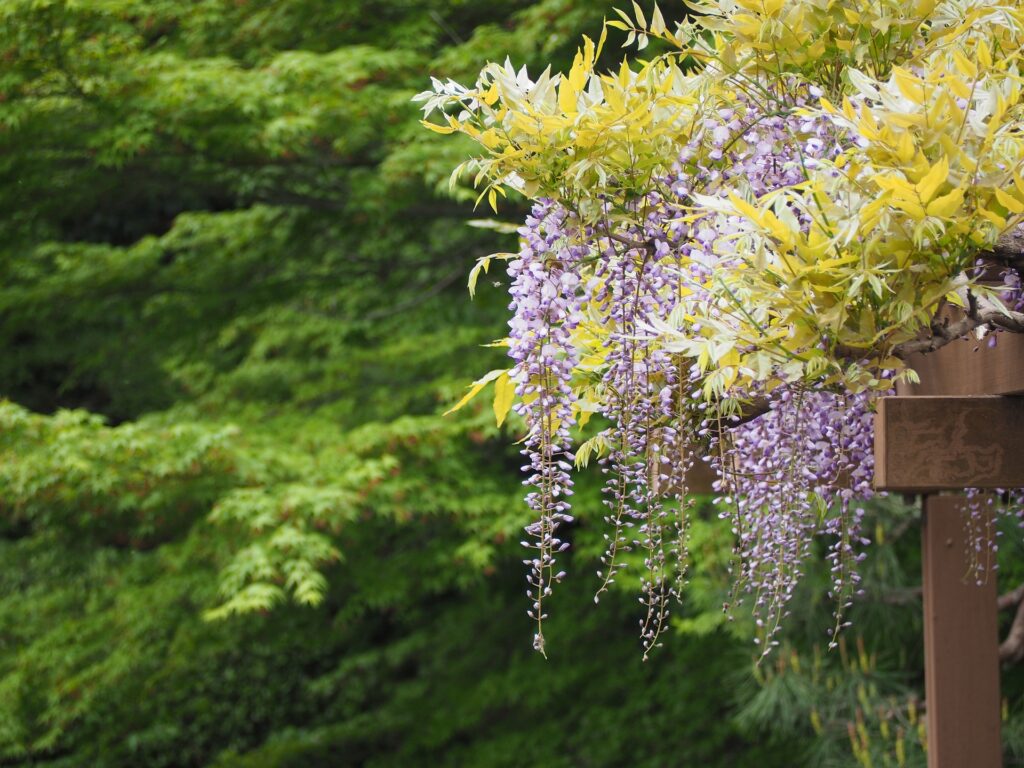
Wisteria, with its cascading clusters of fragrant purple flowers, adds a touch of romantic charm and a nectar-rich feast to any garden. These vigorous climbing vines bloom in the spring, filling the air with their intoxicating fragrance and attracting a variety of bee species. Wisteria is particularly attractive to bumblebees and carpenter bees, who appreciate their abundant pollen and nectar. Their long blooming period and ease of care make them a valuable addition to any bee-friendly garden.
Yarrow: A Feathery Delight and a Nectar-Rich Bounty
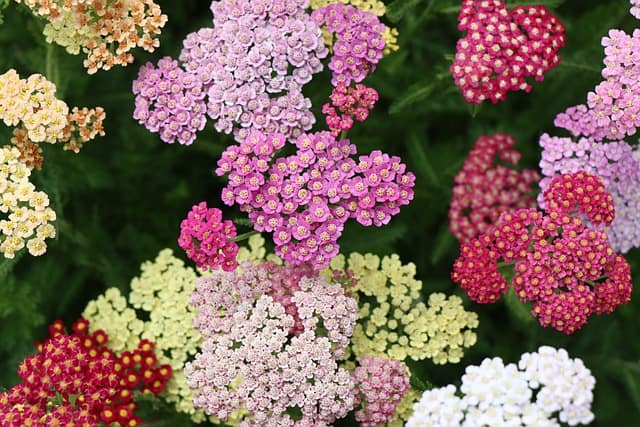
Yarrow, with its feathery foliage and clusters of small, daisy-like flowers in a variety of colors, adds a touch of airy charm and a nectar-rich bounty to any garden. These hardy perennials bloom throughout the summer, providing a continuous supply of pollen and nectar for bees. Yarrow is particularly attractive to butterflies and long-tongued bees, who appreciate their abundant pollen and nectar. Their long blooming period and drought-tolerant nature make them a valuable addition to any bee-friendly garden.
Frequently Asked Questions
What are the best flowers for bees in my region?
The best flowers for bees in your region will depend on your specific climate and growing conditions. However, the flowers featured in this blog post are a great starting point for creating a bee-friendly garden in most areas. You can also consult with your local nursery or extension service for more specific recommendations.
How can I attract more bees to my garden?
In addition to planting bee-friendly flowers, there are a few other things you can do to attract more bees to your garden:
Provide a source of water, such as a shallow dish or birdbath.
Avoid using pesticides, herbicides, and fungicides, which can harm bees.
Leave some areas of your garden wild and untamed, as bees appreciate a variety of habitats.
Plant flowers in large clumps or drifts, as this makes them more visible to bees.
Choose flowers that bloom at different times of the year, so that there is always a source of pollen and nectar available.
What are some other bee-friendly plants?
In addition to the flowers featured in this blog post, there are many other plants that are attractive to bees. Some other good options include:
Herbs: Lavender, rosemary, thyme, oregano, mint, basil
Trees: Linden, crabapple, willow, cherry, apple
Shrubs: Butterfly bush, elderberry, viburnum, hydrangea, potentilla


